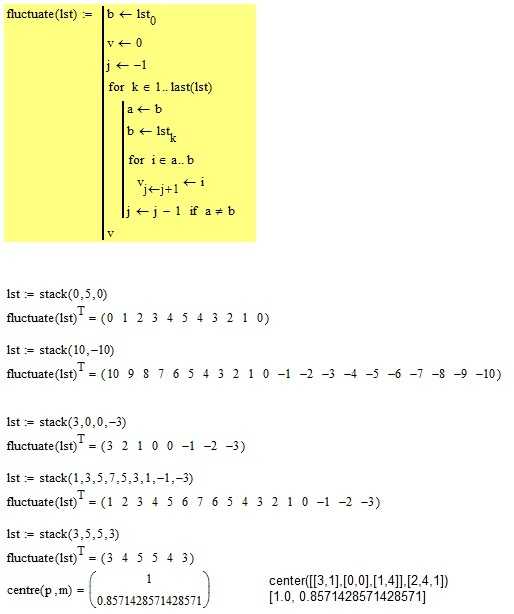19
3
Given a list with number, output the ranges like this:
Input: [0, 5, 0] would become [0, 1, 2, 3, 4, 5, 4, 3, 2, 1, 0].
This is mapping a range through the array, so we first have to create the range [0, 5], which is [0, 1, 2, 3, 4, 5]. After that, we use the 5 to create the range [5, 0]. Appended at our previous range, this gives us:
[0, 1, 2, 3, 4, 5, 4, 3, 2, 1, 0]
Let's observe a test case with two same digits next to each other:
[3, 5, 5, 3], ranges:
[3, 5] = 3, 4, 5
[5, 5] = 5 (actually [5, 5] due to overlapping)
[5, 3] = 5, 4, 3
So this would give us [3, 4, 5, 5, 4, 3].
Some other test cases:
[1, 9] > [1, 2, 3, 4, 5, 6, 7, 8, 9]
[10, -10] > [10, 9, 8, 7, 6, 5, 4, 3, 2, 1, 0, -1, -2, -3, -4, -5, -6, -7, -8, -9, -10]
[3, 0, 0, -3] > [3, 2, 1, 0, 0, -1, -2, -3]
[1, 3, 5, 7, 5, 3, 1, -1, -3] > [1, 2, 3, 4, 5, 6, 7, 6, 5, 4, 3, 2, 1, 0, -1, -2, -3]
Input will always have at least 2 integers.
Shortest answer wins!

3Related. Related. – Martin Ender – 2016-03-05T14:22:18.990
1In what way are input and output related? What constitutes a valid input? – flawr – 2016-03-05T14:31:29.540